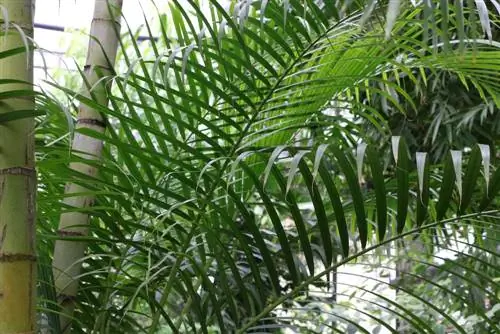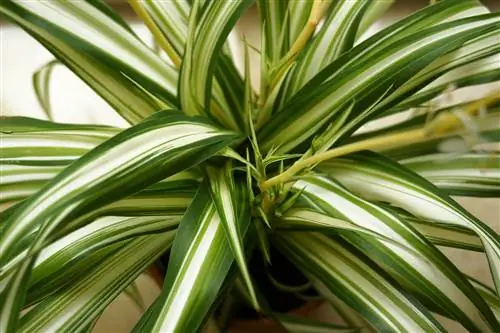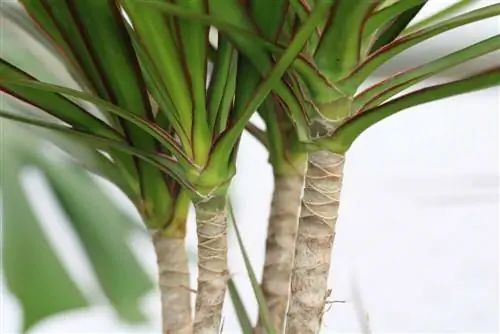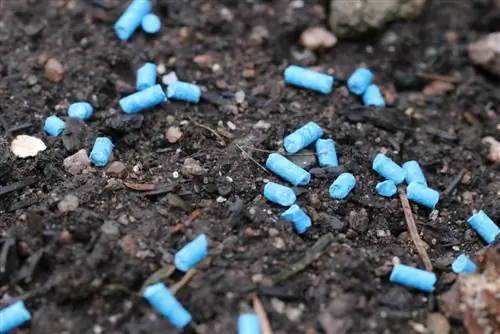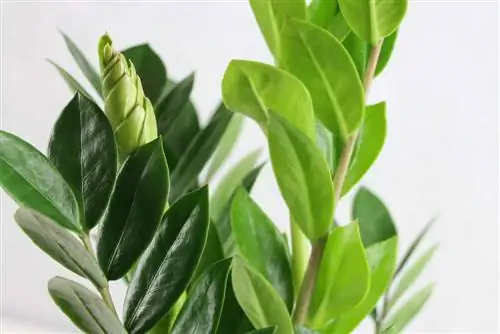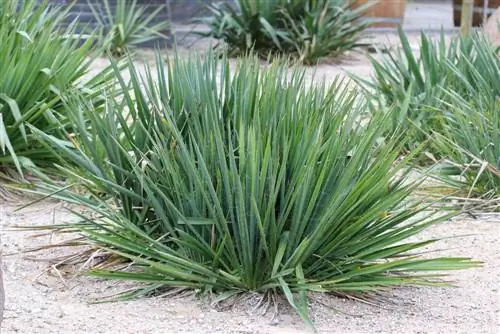- Author admin [email protected].
- Public 2023-12-17 03:39.
- Last modified 2025-01-24 12:45.
The golden fruit palm has the botanical name Chrysalidocarpus lutescens and is a very common houseplant in these latitudes. This is also known as the feather palm and is very popular for its decorative properties. However, there are doubts about the toxicity of the plant, which could be particularly dangerous for cats and children. There are also some important factors to consider when it comes to location and the risk of injury.
Toxicity
There is a persistent rumor that Chrysalidocarpus lutescens is poisonous to pets and especially kitties. The reason for this may be the exotic appearance of the palm tree, which originally comes from Madagascar.
- Is not poisonous to cats
- There is also no risk of poisoning other pets
- So far no symptoms of poisoning in humans have been reported
- Listed as presumably non-toxic by the Poisoning Information Center
Risk of injury
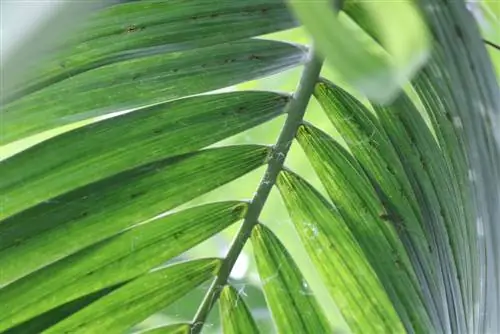
The Chrysalidocarpus lutescens develops long and fine fronds, which cats especially like to gnaw on. However, this negatively affects the visual impression of the palm tree. Although there are no toxic consequences for pets upon contact, there is a risk of injury. Therefore, domestic cats in particular should be permanently prevented from eating palm fronds, as they are very curious and can quickly choke. This circumstance can subsequently lead to problems in the cat's stomach. Although many domestic cats generally ignore the palm tree, there are exceptions. Therefore, pet owners generally cannot completely rule out the possibility that their own cat will tamper with their house plants. For this reason, caution should always be exercised.
- Leaves are not digestible
- Fronds are also extremely sharp
- Can lead to painful cuts and puncture injuries
- The esophagus and digestive tract are particularly at risk
- Accumulate into thick balls in the cat's stomach
- Animal tries to get rid of them by vomiting
- If possible, keep any cat away from golden fruit palms
- Never leave plant parts lying around
- Immediately remove fallen leaves and cut palm fronds
- A risky approach even for children
- Injuries to the eyes are particularly dangerous
- These can have harmful consequences for eyesight
Make it cat-proof
Even if there is no direct risk of poisoning, the golden fruit palm should be placed in a location where no cat can reach it. The furry friends sometimes nibble on the fronds, which causes the leaves to turn brown and unsightly. Since the fronds don't grow back, the plant wilts miserably. In addition, domestic cats can accidentally destroy the vegetation point of the palm tree through this behavior, which can even cause it to die.
- Pots of golden fruit palms are often very heavy due to their size
- Especially with older and larger specimens
- Domestic cats can tear these down while playing
- There is a risk of injury and damage
- Secure the palm tree and pot well
- Place out of reach, without risk of falling
Likelihood of confusion

There are some types of palm trees that look extremely similar to golden fruit palms. Since some of these species have poisonous properties, they should not be cultivated in cat households. Due to the resulting risk of confusion, the respective palm tree should only be placed in an inaccessible location.
- Check exactly what type of palm tree it is
- If no clear identification, consult experts
- Every gardening store offers competent help with exact plant identification

